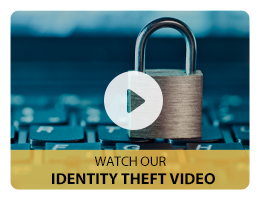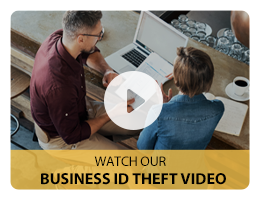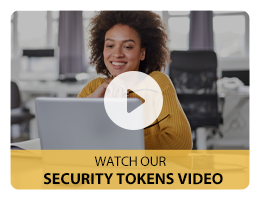Fraud and Identity Theft
FRAUD ALERT: Cornhusker Bank and our EnFact fraud partners will NEVER ask you to provide your card’s PIN or security code (CVV code) located on the back of the card. Our Enfact alerts will ask about the suspicious transaction(s) in question, and you won’t need to provide any further sensitive information. We take protecting your financial information seriously. If you’re not sure that a call or text is from us, please hang up immediately and contact our Customer Engagement Team at (402) 434-2265. |
Protect Your Email from Compromise with Multi-Factor Authentication (MFA)
Enabling multi-factor authentication (MFA) for your email account is an essential step to enhance its security. We strongly encourage you to work with your IT partners to enable MFA on your email platform. Here are the general steps for enabling MFA for some popular email providers:
For Gmail (Google):
-
Sign In to Your Google Account:
- Go to myaccount.google.com.
- Click on "Sign in" and enter your Google account credentials.
-
Navigate to Security Settings:
- On the left sidebar, click on "Security."
-
Enable 2-Step Verification:
- Under the "Signing in to Google" section, find "2-Step Verification" and click on it.
- Click "Get Started" and follow the on-screen instructions.
-
Set Up Your Phone:
- Enter your phone number and choose whether you want to receive verification codes via text message or phone call.
- Click "Next" and enter the code you receive to verify your phone number.
-
Complete Setup:
- Once your phone number is verified, click "Turn On" to enable 2-Step Verification.
-
Optional Steps:
- You can add backup codes, set up the Google Authenticator app, or add a security key for additional security.
For Outlook (Microsoft):
-
Sign In to Your Microsoft Account:
- Go to account.microsoft.com and sign in with your Microsoft account.
-
Navigate to Security Basics:
- Click on "Security" in the top menu.
-
Additional Security Options:
- Click on "More security options" at the bottom of the "Security basics" page.
-
Set Up Two-Step Verification:
- Under "Two-step verification," click "Set up two-step verification."
- Follow the on-screen instructions to complete the setup, which typically involves adding a phone number or an authenticator app.
-
Complete Setup:
- After verifying your phone number or setting up the authenticator app, two-step verification will be enabled.
For Yahoo Mail:
-
Sign In to Your Yahoo Account:
- Go to login.yahoo.com and sign in with your Yahoo credentials.
-
Navigate to Account Security:
- Click on your name or profile icon in the top-right corner, then select "Account Info."
- In the left sidebar, click on "Account Security."
-
Enable Two-Step Verification:
- Find "Two-step verification" and click the toggle switch to turn it on.
- Follow the prompts to enter your phone number and choose whether you want to receive codes via text message or phone call.
-
Verify Your Phone:
- Enter the code you receive to verify your phone number.
-
Complete Setup:
- Once your phone number is verified, two-step verification will be enabled.
For Apple Mail (iCloud):
-
Sign In to Your Apple ID:
- Go to appleid.apple.com and sign in with your Apple ID.
-
Navigate to Security:
- In the "Security" section, click on "Edit."
-
Enable Two-Factor Authentication:
- Click on "Turn on Two-Factor Authentication."
-
Follow the Prompts:
- Follow the on-screen instructions to verify your identity and set up your trusted phone number.
-
Complete Setup:
- Enter the verification code sent to your trusted device or phone number.
General Tips:
- Use an Authenticator App: If available, use an authenticator app like Google Authenticator or Microsoft Authenticator for better security compared to SMS.
- Backup Methods: Set up backup methods (e.g., backup codes) in case you lose access to your primary authentication method.
- Keep Your Information Updated: Ensure your phone number and recovery email are up to date.
- By following these steps, you can significantly enhance the security of your email account, making it much harder for unauthorized users to gain access.
Why You Should be Cautious
Fraud is committed when criminals use your personal information to access your bank accounts, obtain loans, make purchases, rent an apartment in your name, get a job, get medical services, or otherwise use your identity for their own purposes. People all over the world have fallen victim to account takeover, losing millions to criminals and criminal enterprises. It is critical to become versed in and implement best security practices to avoid becoming a victim. Cornhusker Bank always takes protecting your financial information seriously and in these web pages, our newsletters and information found in tips on our e-mail messages and in branches, we strive to give you tools to EDUCATE yourself about fraud methods and activities, give you tips to PREVENT identity theft and fraud, and provide you the information on how to ACT if you feel you are in danger of identity theft or fraud.
Cornhusker Bank, or its partners, may contact you by phone or text regarding potential fraud on your account. You will not be asked to provide Personally Identifying Information by a legitimate contact.
Prevent
Everyone who uses the internet is a potential target for fraudsters. As part of Cornhusker Bank’s commitment to your success, we make protecting your personal information a priority, but offer the follow methods for you to be a partner in stopping fraudulent activity:
-
Credit, Debit and ATM Cards
- Sign new cards as soon as you receive them.
- Limit the number of credit, debit and ATM cards in your purse or wallet.
- Cancel all cards not in use.
- Report lost or stolen cards immediately.
-
Mail
- Promptly remove mail from your mailbox.
- Avoid leaving mail unattended.
- Deliver outgoing mail directly to a postal carrier or inside post office collection box. Blue boxes may not be safe.
- If possible, avoid mail and switch to electronic payment system.
-
Social Security Numbers
Someone who uses your Social Security Number and assumes your identity can cause you many problems. Learn how to handle your Social Security Number if you think someone else is using your number in the publication: https://www.ssa.gov/pubs/EN-05-10064.pdf
-
Credit Reports
Congress enacted a law entitling every consumer in the United States to obtain one free credit report every 12 months from each of the three major credit bureaus. Reports should be reviewed for completeness and accuracy to ensure no unknown activity has taken place under the consumer's identity. You may receive free credit reports by mail, by phone or online from a jointly run service by the three credit bureaus, but it is important to note the report should be printed and saved. Once you navigate away from the page it will be unavailable. The free program does not include Credit scores but Credit Scores can be purchased from the credit bureaus. If you request one each from the three services every four months you can keep track of the activity associated with your identity.
Online www.AnnualCreditReport.com
By phone: (877) 322-8228
By mail: Credit Report Request Service P.O. Box 105281 Atlanta, GA 30348-5281
The three major credit bureaus, if you choose to contact them individually, are:
EQUIFAX 1-800-685-1111
EXPERIAN 1-888-397-3742
TRANS UNION 1-800-888-4213
- Order a copy of your credit report annually and review its accuracy.
- Check your credit report for unauthorized bank accounts, credit cards and purchases.
- Look for anything suspicious in the section of your credit report that lists who has received a copy of your credit history.
-
Financial Instruments & Records
- Do not throw any transaction receipts into the trash, especially at a store or in a public receptacle.
- Save all financial receipts and reconcile them to your accounts frequently.
- Shred all financial records including expired cards, statements, checks and receipts.
- If you use a checkbook, be sure to keep it in a safe place and keep track of check numbers in use.
- If a store/merchant converts your check into an electronic transaction, be sure you retrieve the cancelled check.
- Contact your financial institution immediately if your checkbook or any checks are missing.
-
Financial Statements
- Contact your financial institution immediately if a bank account or credit card statement does not arrive on time.
- Review your statements promptly and report any discrepancy or unauthorized transaction immediately. Know your account cycles and notify the bank/company of any missing statements or bills.
- Switch paper statements to electronic statement to avoid the above risks.
- Switch to electronic bill payments.
-
Solicitations – Potential Phishing
- Overly attractive offers could be too good to be true. Be cautious of such offers and do not provide any information or click any links without validation.
- Before responding to an offer, validate the legitimacy of the individual or business making the offer.
- Do not respond to unknown and/or unsolicited emails requesting you click a link, log into a site, or provide personally identifying information.
- Cornhusker Bank will never request ANY customer's information. If you should receive a request via email, phone, mail, or in person from "Cornhusker Bank" or law enforcement, end the communication and contact Cornhusker Bank at 402-434-2265. This could be an imposter.
-
Information Security
- Securely store personal identifying items such as extra checks, credit cards, documents containing your Social Security number, and similar items.
- Shred expired Credit cards, all credit card receipts and solicitations, ATM receipts, bank account and credit card statements.
- Shred canceled checks, and other financial documents.
-
Access Devices – (PINs, Passwords, FOBs)
- Memorize PINs and passwords.
- Do not share or record access devices.
- Change your passwords periodically.
- Avoid selecting easy to figure out passwords and PINs- Use strong ones such as easy to remember personal phrases.
- Do not write PINs and passwords down on or near your checkbook, credit cards, debit cards or ATM cards.
-
Wallets and Purses
- Only carry checkbooks, credit cards, debit cards, ATM cards you will need.
- Do not carry your Social Security number with you or include it on your checks.
- Avoid carrying your wallet in an easy to access location (i.e. outside jacket pocket).
- Avoid carrying your purse in a casual manner (strap in your hand, on shopping cart, etc).
- Do not leave purse or wallet unattended in your vehicle.
-
Electronic Devices (Computers, Tablets, SmartPhones)
- Keep your computer operating systems current.
- Install anti-virus, anti-malware and antispam software.
- Install a firewall and keep it turned on.
-
Protect Your Identity
- Shred financial documents, including charge receipts, you are done with.
- Don't release personal information – Protect Social Security numbers, financial information, and credit card numbers.
- Use all the suggestions on this page to help keep your information safe.
-
Protecting your Business
- Use anti-virus and anti-spyware (malware) software.
- Secure your internet connection with a hardware firewall.
- Install a software firewall on all computers.
- Apply security patches and updates to software programs. (i.e. Microsoft, etc)
- Create electronic backup copies of important data/information.
- Control unauthorized physical access to protect computers and important information systems.
- Secure wireless access points.
- Train employees on basic physical and information security practices.
- Require the use of unique user accounts for each employee on computers and applications. Limit user authority so they are not able to install software on work computers.
- Limit employee access to data and information on a need to know basis.

|

|

|

|
Educate
Cornhusker Bank takes protecting your financial information very seriously. Always remember that Cornhusker Bank will never send you an email or pop up window requiring you to submit personal information to us. Following are some of the most common ways today’s criminals are committing Identity theft and fraud:
Mail TheftThis “old school” method of ID theft involves thieves scouting for unlocked mailboxes and stealing your mail, along with your identity, right from your front door or curb. One way to protect yourself from this type of identity theft is to opt out of prescreened credit offers. |
PhishingPhishing is a form of online fraud in which attackers send an illegitimate email, claiming to be important, urgent or posing as a legitimate business. Today’s thieves are busy impersonating legitimate businesses via email and websites in order to acquire your personal information like PINs, credit card or bank account numbers, or Social Security information. |
Dumpster DivingThis method of identity theft is one of the most traditional, and most effective forms of perpetrating fraud. Thieves search your trash for documents containing your personal information and gain access to important numbers which help them commit identity theft. Always shred any personal information before you throw it away, especially prescreened credit offers. |
VishingEmail, texting, and websites are not the only way thieves are phishing for personal information. Vishing is when voicecalls are made to your landline or mobile phone. They are an effective way for thieves to get your personal information. If you are ever suspicious of a phone call asking for personal information or claiming to be a bank or business, hang up and call the bank or business on a phone number you can verify. |
SMSishingThieves are employing this new trend to get your personal information by sending text messages to your mobile device impersonating a reputable contact and then directing you to a dangerous website with the goal of stealing your identity. |
OverlaysHidden devices can be installed almost imperceptibly on any ATM, enabling thieves to swipe your account information when you insert your card, and then transmit your account information to a nearby computer for future fraudulent use. Be wary if there are any loose pieces or if there are signs of tampering on ATMs and gas pumps. |
Shoulder SurfingThe prevalence of cameras and recorders in today’s mobile phones make this form of identity theft a growing threat. Thieves position themselves within sight or hearing distance of your information when you are using personal identification methods, and record your information to commit future fraud. |
ATM Skimmers/Handheld SkimmersToday’s thieves are innovating the way they steal your personal information, by swiping it—literally—when you are in the midst of a legitimate transaction such as paying for dinner bill at a restaurant, pumping gas, or using an ATM. |

Stay Connected With Us